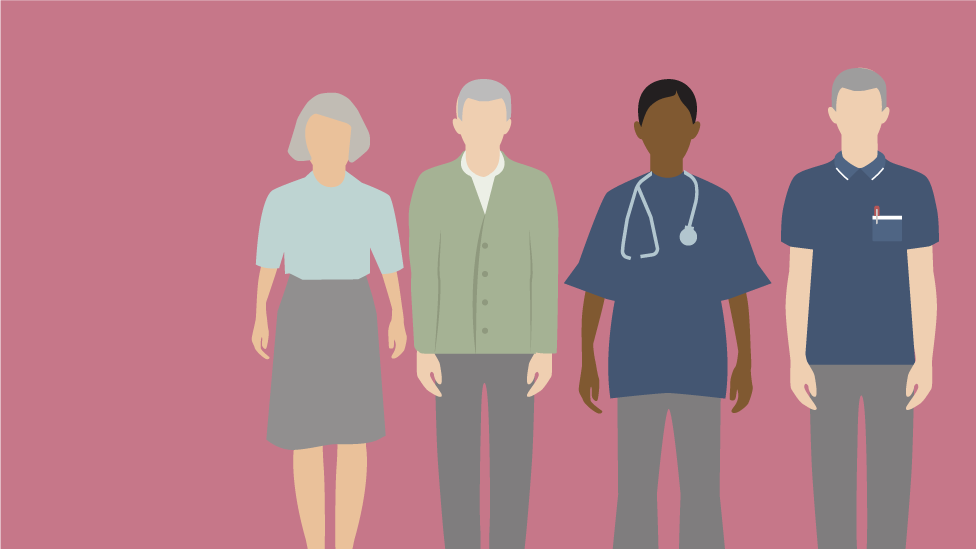The history of the NHS in charts
- Published
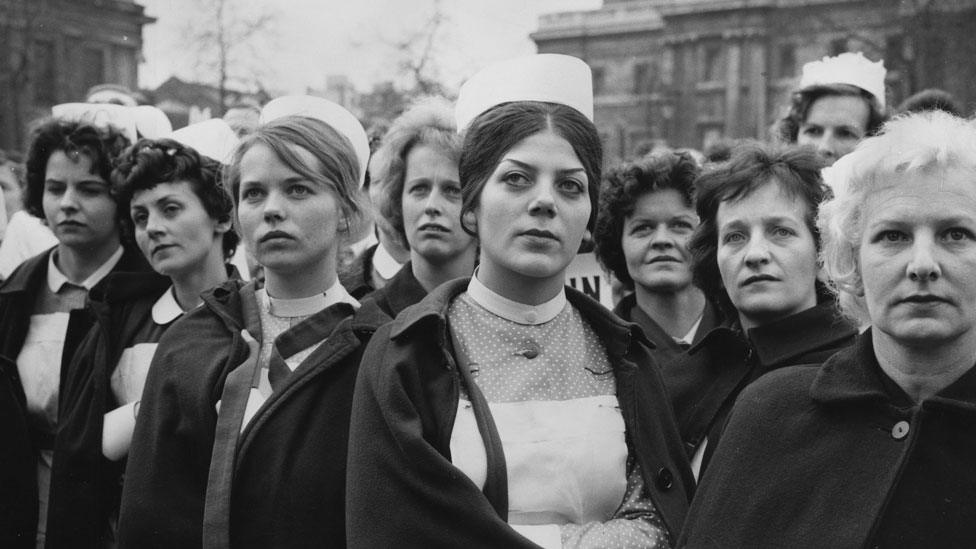
The NHS came kicking and screaming into life on 5 July 1948.
It was the first time anywhere in the world that completely free healthcare was made available on the basis of citizenship rather than the payment of fees or insurance.
It brought hospitals, doctors, nurses and dentists together under one service. But in the 70 years since its creation much has changed.
1. Many more staff are employed
The numbers working for the NHS have boomed. There are now 1.7m people employed by the health service across the UK, making it the fifth largest employer in the world.
The biggest group in the workforce are nurses. The numbers employed have trebled.
But that pales into insignificance next to doctors. There are now 10 times as many working for the health service as there were when it was created.
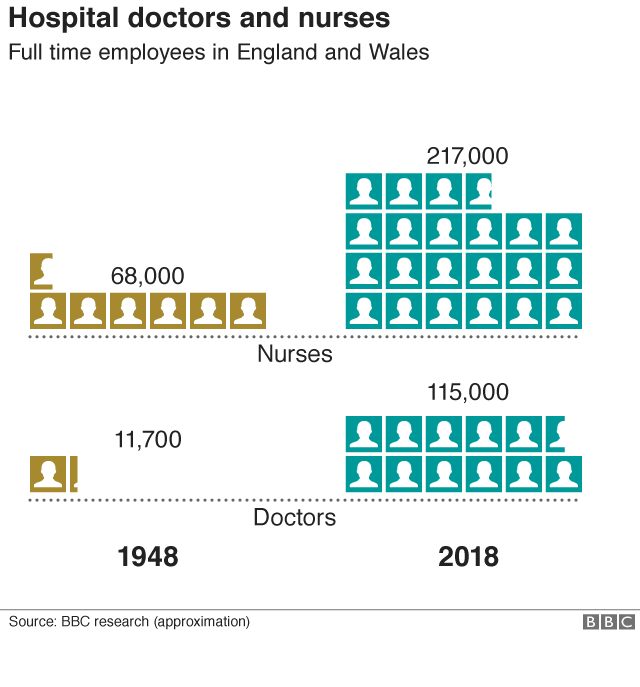

This partly reflects how quickly medicine has advanced and how demand has increased, meaning many more medical experts are needed to care for patients.
But roles have changed too. The job nurses do today has become much more specialised - it is now a degree-level profession.
The basic personal care they used to provide is now much more likely to be done by healthcare assistants, with nurses involved in providing complex care that was once the preserve of doctors.
2. Money, money, money
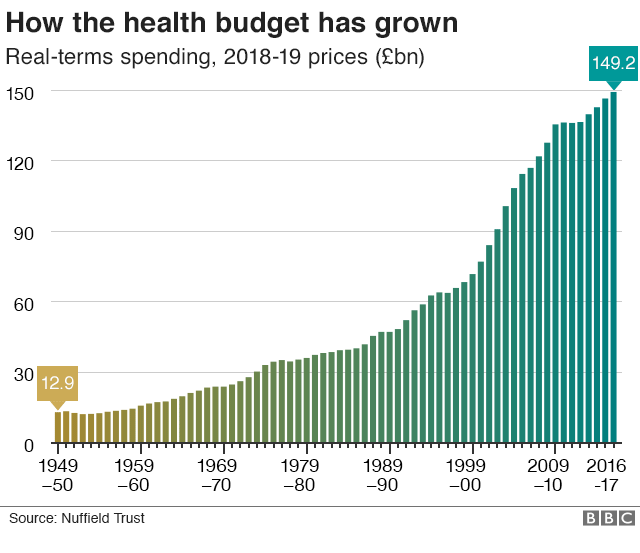
Of course, as the number of staff has grown, so has the budget. The amount spent on health is now 12 times bigger than it was when the NHS started - and that's after you take inflation into account.
And the pot is set to grow even further. Last week the government announced the budget for the NHS in England would be increasing by 3.4% annually over the next five years.
3. It takes a greater share of the public purse
Governments over the years have had to invest more and more of their money into the health service. Today 30p out of every £1 spent on services goes on health.
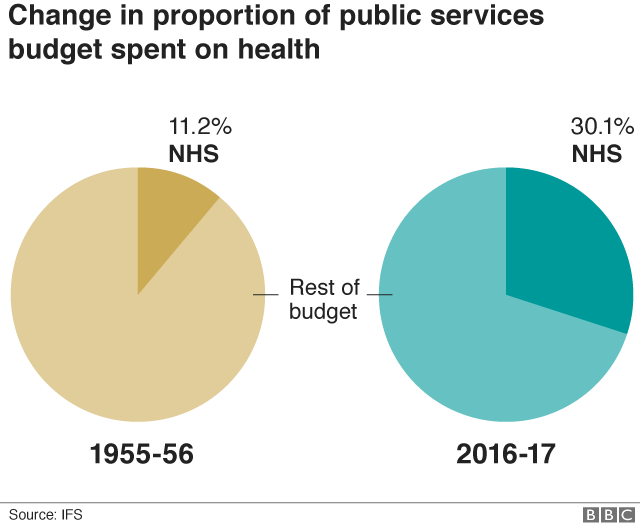
It has meant falls in other areas of spending - among the biggest losers have been defence and housing.
4. But charges have had to be brought in
The early years were tough. The budget had to be cut in the early 1950s as the government struggled to keep up with demand.
It forced ministers to introduce charges for prescriptions, dental work and spectacles.

Today prescriptions cost £8.80 - but only in England (and there are many exemptions, covering children, older people and those with certain conditions).
Elsewhere in the UK they have been made free again.
This is just one of the consequences of devolution, which has seen individual administrations given control over health policy.
5. Bed numbers have been cut
Not everything has gone up. The most obvious example is the number of beds. There are now four times fewer beds than there were originally.
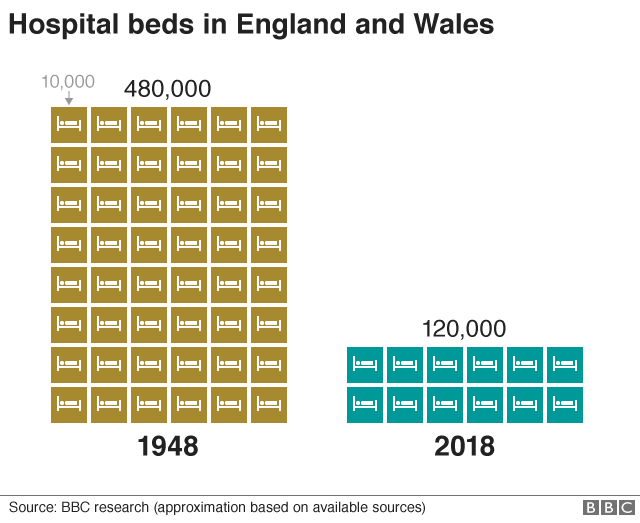
This is because much more can be done in the community.
And patients also spend much less time in hospital than they once did.
Women who give birth today now tend to leave on the same day or the day after. After the creation of the NHS, as birth became medicalised, women would spend a week in hospital.
It is a similar story for operations. The first hip replacement was carried out in late 1948. The patient spent weeks in hospital. Now the operation can be done as a day case.
6. People live longer

At the heart of the story of the NHS, is its impact on the nation's health.
People now live 13 years longer than they did 70 years ago.
Better access to healthcare has played a key role. But it is also worth noting that in the 70 years before the creation of the NHS, life expectancy actually increased by double what it has since.
Access to clean water and construction of sewers were two of the biggest factors in that.
7. Babies are less likely to die
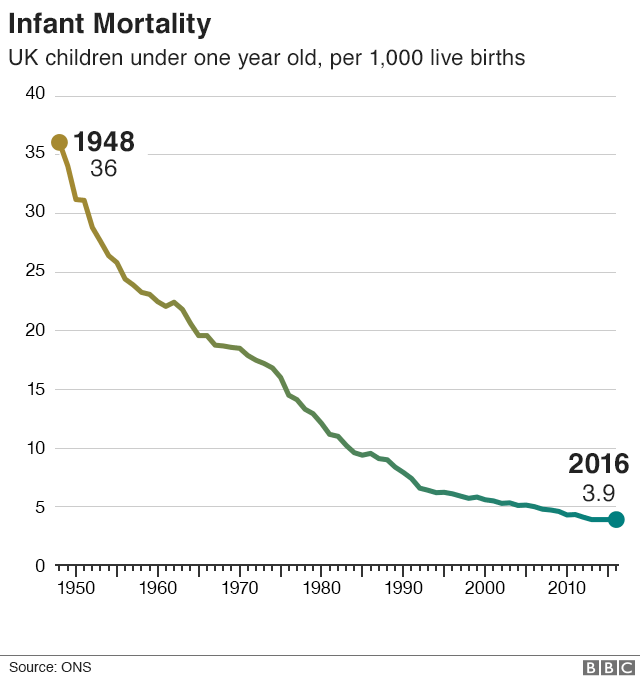

Infant mortality - defined as deaths before the baby's first birthday - has improved dramatically.
There are five key influences - congenital anomalies, prematurity, sudden infant death syndrome, maternal complications and birth injuries.
The creation of the NHS, meaning births moved from home into a medical environment, and the advancement of medicine have been hugely influential.
8. Vaccination has saved lives
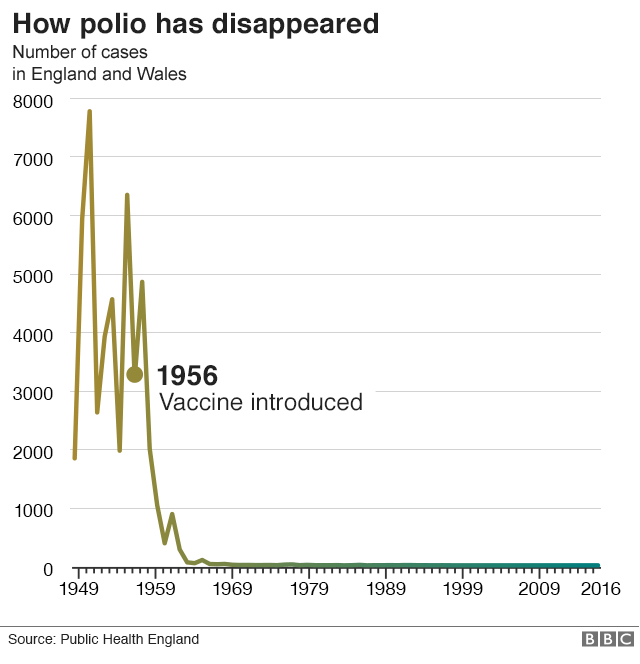

Another factor is immunisation. The NHS was set up not simply to treat illness, but also to promote good health.
The introduction of the polio vaccine in the 1950s is a perfect example of this.
Before this programme, cases of polio could climb as high as 8,000 in epidemic years, but once people started getting immunised the numbers dropped quickly.
There is now a comprehensive vaccine programme in childhood with immunisations covering everything from meningitis and mumps to whooping cough.
9. But as the population ages the causes of deaths have changed
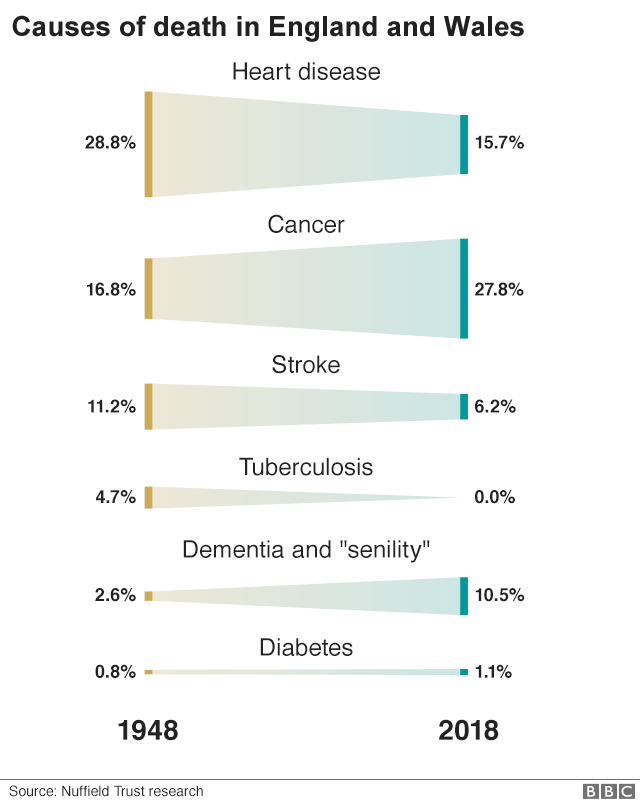

Improved healthcare and immunisation have meant the conditions people are dying of have changed.
Infectious diseases, heart attacks and strokes are no longer claiming the number of lives they once did.
Instead, people are more likely to be living with long-term conditions for which there are no cures.
The most notable of these is dementia.
Supporting people who can face many years of poor and deteriorating health is perhaps the biggest challenge for the next 70 years.
Visual journalism by David Brown
- Published20 June 2018
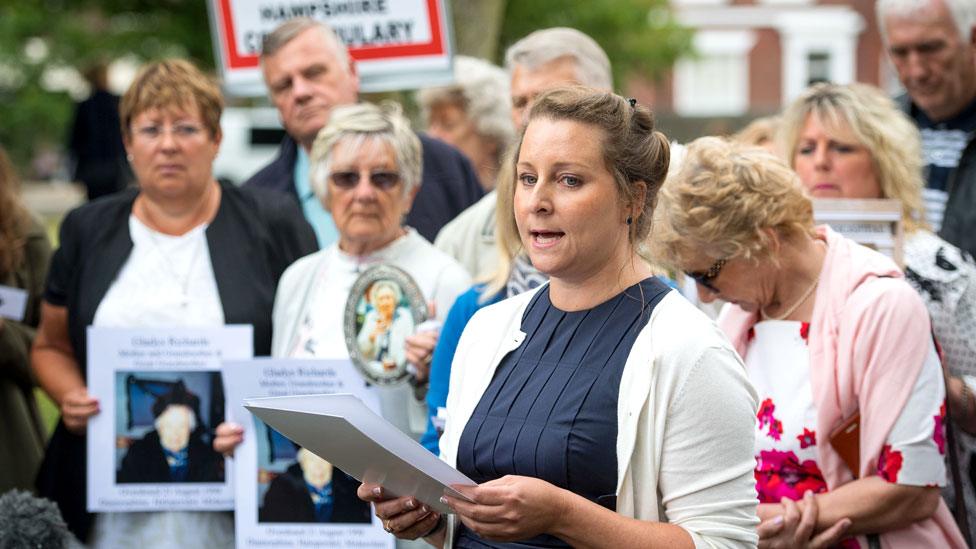
- Published8 February 2017
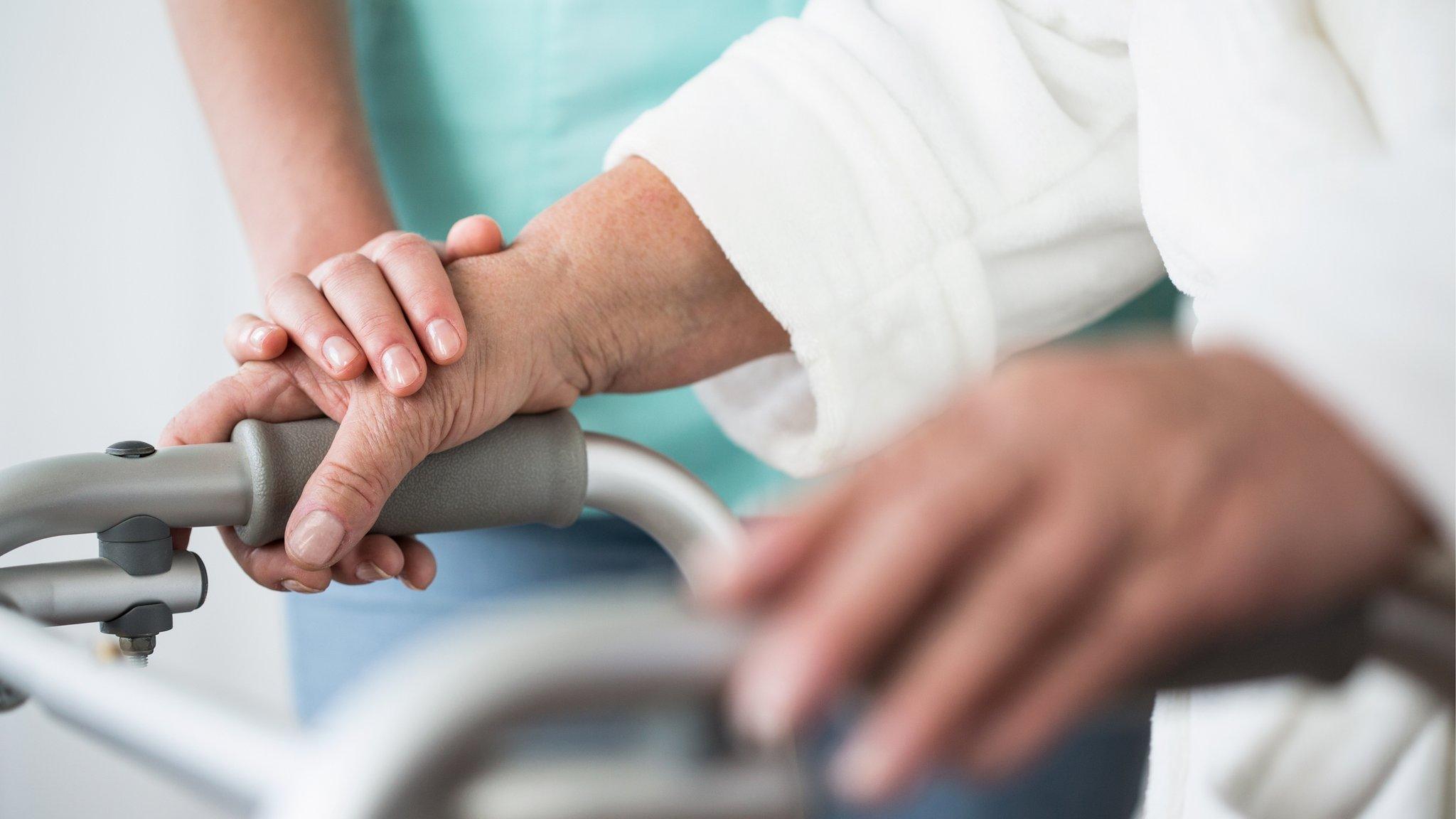
- Published8 February 2017

- Published6 January 2017
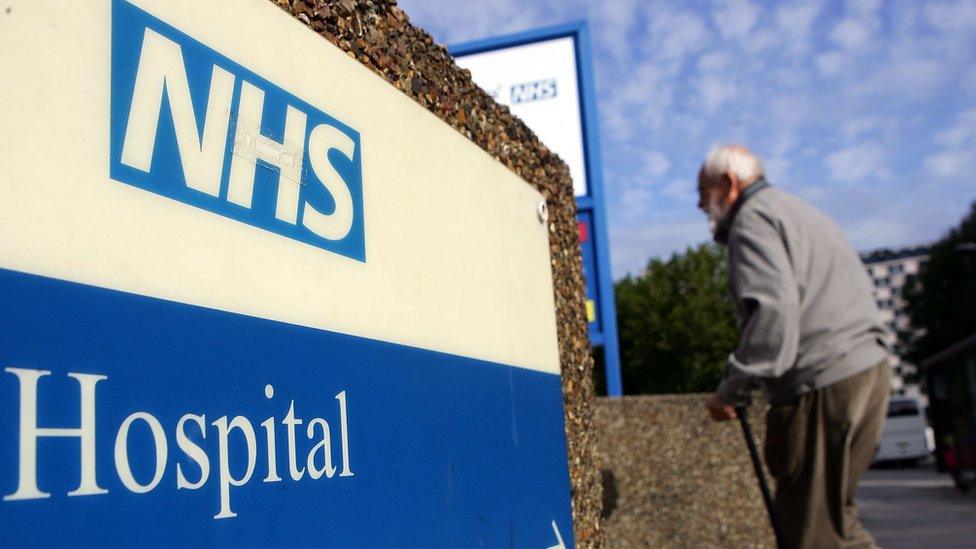
- Published12 December 2016

- Published13 September 2016
